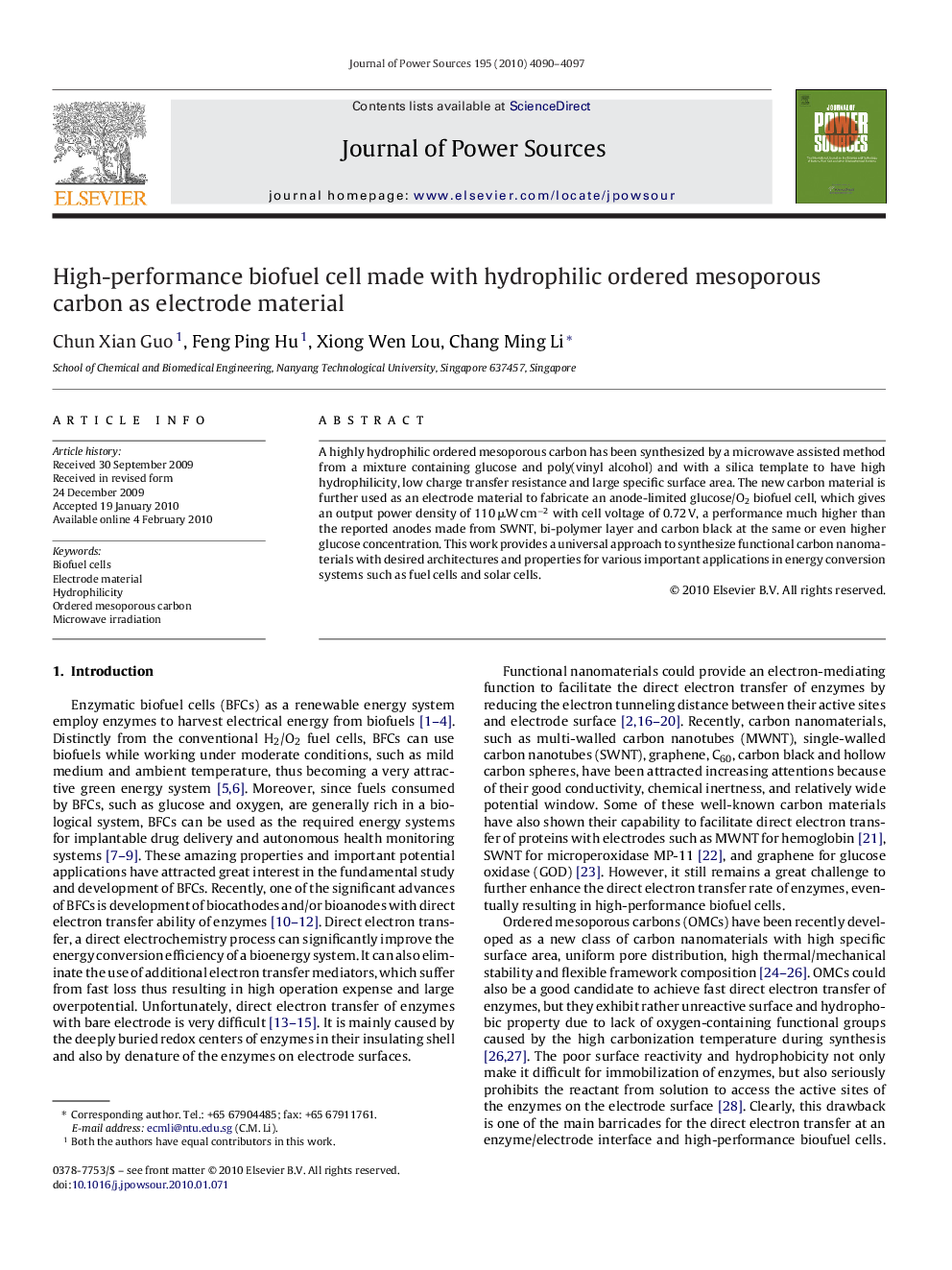| Article ID | Journal | Published Year | Pages | File Type |
|---|---|---|---|---|
| 1290333 | Journal of Power Sources | 2010 | 8 Pages |
A highly hydrophilic ordered mesoporous carbon has been synthesized by a microwave assisted method from a mixture containing glucose and poly(vinyl alcohol) and with a silica template to have high hydrophilicity, low charge transfer resistance and large specific surface area. The new carbon material is further used as an electrode material to fabricate an anode-limited glucose/O2 biofuel cell, which gives an output power density of 110 μW cm−2 with cell voltage of 0.72 V, a performance much higher than the reported anodes made from SWNT, bi-polymer layer and carbon black at the same or even higher glucose concentration. This work provides a universal approach to synthesize functional carbon nanomaterials with desired architectures and properties for various important applications in energy conversion systems such as fuel cells and solar cells.
